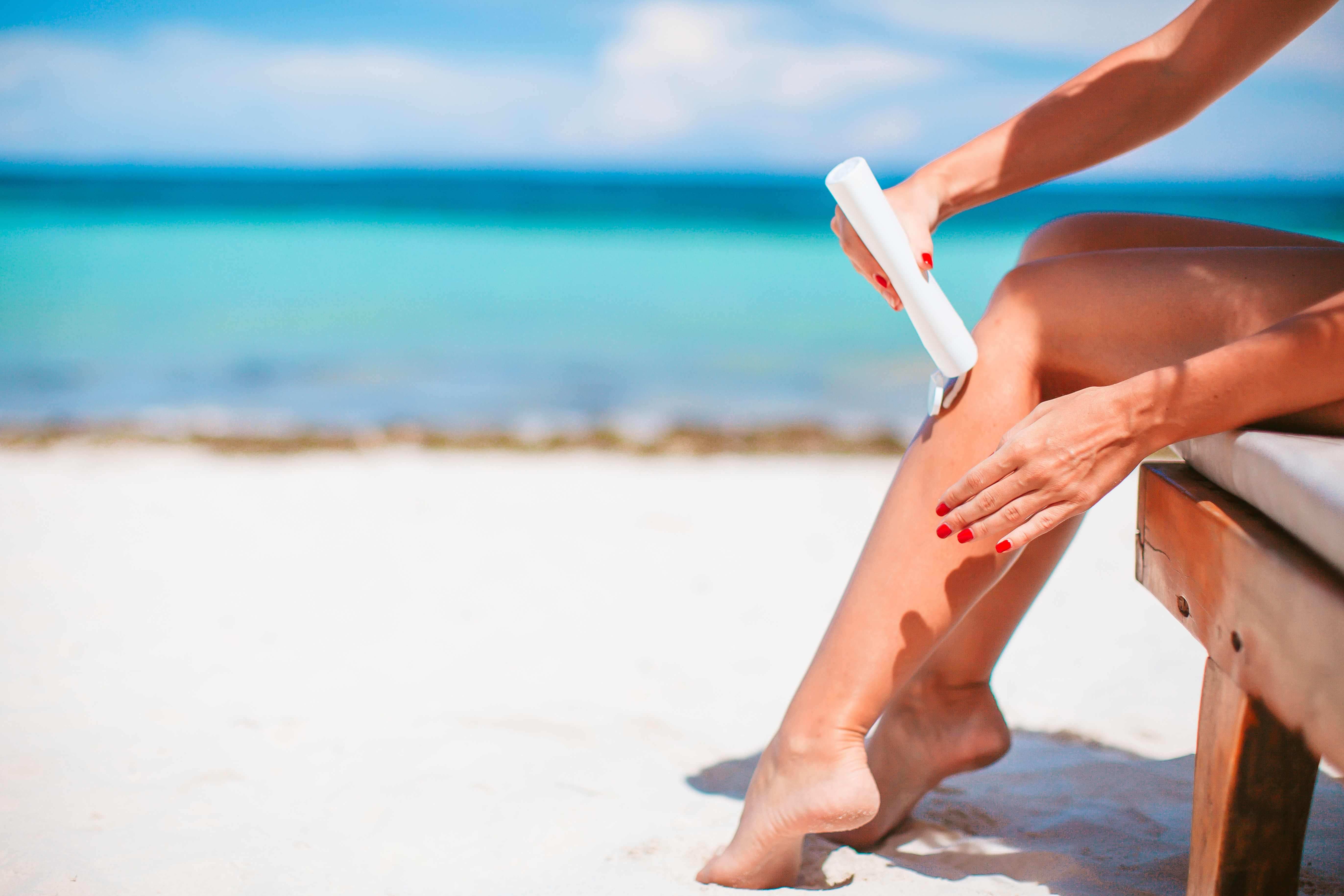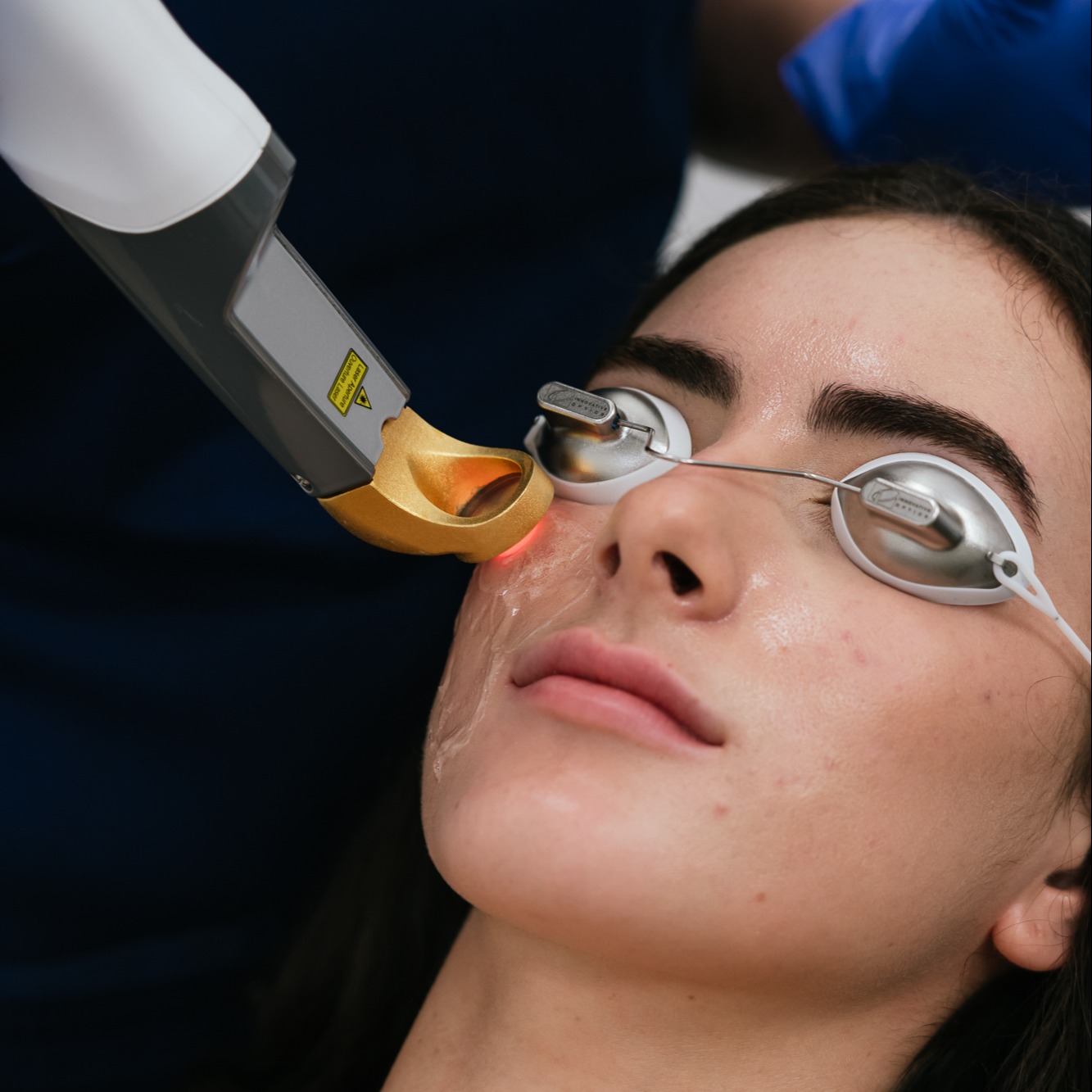May is Sun Awareness Month!

As you know, we earnestly advocate year-round sun protection, but this month in particular, we’re focused on raising awareness for skin cancer prevention.
May is the Canadian Dermatology Association’s Sun Awareness Month. True to form, our post this month is filled with vital information on keeping your skin safe.
Keep reading for essential tips on checking your skin, the ABCDEs of mole screening, early warning signs, and how best to protect your skin from skin cancers like melanoma.
Long-term UV exposure can cause other forms of photodamage, too, like hyperpigmentation, premature aging and actinic keratosis! Learn about non-cancerous and pre-cancerous signs of damage and treatment options.
Check yourself!
In case you missed it, May 7 was Check Your Skin Day. But don’t wait until next year – we suggest you check your skin regularly to monitor for any changes. This quick and simple check could save you from a life-threatening skin cancer. Here are some tips:
- Get completely undressed!
- Use a full-length mirror in a well-lit room to check every inch of your skin. Use a hand-held mirror to help you see your back, buttocks and backs of your legs.
- Don’t forget to check your underarms, hairline, scalp and behind your ears.
- Next, take a seat and examine your hands and feet. Check between fingers and toes, and check each nail. Don’t forget the bottoms of your feet.
You’re looking for outliers, or “ugly ducklings”, anything that looks different from your other moles or freckles, or anything that has recently appeared, grown or changed. If you find any, show your family doctor!
Click here for appointment information
Know your ABCs (and Ds and Es)...
How do you know if that mole or freckle is something more concerning? Lots of moles and freckles are harmless (benign). However, if you’ve noticed a chance in size, colour or texture, you should show your family doctor. Use the ABCDE rule to monitor for warning signs.
Asymmetry: Is it round and symmetrical? If not, get it checked.
Borders: Is the border even and smooth? If not, get it checked.
Colour: Colour can be light or dark brown, but is it even? If not, get it checked.
Diameter: Is the diameter less than 6mm? If not, get it checked.
Evolving: Does it look the same as the last time you checked it? If not, get it checked.
A great way to monitor your moles is to take photos with your smart phone and keep checking over time for changes.
If you're not sure if something is concerning, make an appointment to show your family doctor.
Click here for appointment information
Moles, Freckles and Sunspots
A mole, or nevus, is a pigmented spot on the skin and may be raised or flat. The average adult has between 10 and 40 moles, according to the National Cancer Institute. They’re caused by clusters of pigment-producing cells, called melanocytes. Most moles are harmless, but as noted above, if a mole changes in size, colour or texture, get it checked.
Melanocytes are distributed throughout your skin and produce more pigment, called melanin, in response to UV radiation. This causes your skin to tan or freckle, but where clusters of melanocytes form, this results in a mole.

Freckles, or ephelides, first show up when you’re younger, usually on sun-exposed areas. They may fade in the winter, or go away completely as you get older.
Solar lentigines, sometimes called age spots, sunspots or liver spots, are similar to freckles but show up as you get older and don’t fade or disappear. These can range from yellow to dark brown.
Photoaging is the general term for premature aging of the skin from UV exposure. Photoaging is different from chronological aging, and is the direct result of cumulative damage to the DNA of skin cells from UV radiation. Photodamage can include freckles, solar lentigines, and uneven skintone, but also includes loss of elasticity, resulting in fine lines, wrinkles and laxity. According to the Skin Cancer Foundation, photoaging is responsible for 90% of visible changes to the skin.
Cosmetic treatment is available for benign concerns. If your sun damage is bothersome, there are cosmetic treatments available:
- Benign moles can be removed through surgical excision or CO2 laser.
- Uneven pigmentation can be treated with laser, IPL or skin resurfacing.
- Signs of premature aging from photodamage (like fine lines and wrinkles, loss of tone and elasticity, or poor texture) can be treated with RF microneedling, laser or injections.
Contact us to schedule a cosmetic consultation if you're interested in discussing cosmetic treatment options.
The Truth About Tanning
Tanning is the result of melanocytes producing more melanin, which is your skin’s response to damage from harmful UV rays! So remember that any form of a tan is a sign of sun damage. This is true for both indoor (tanning salons) and outdoor tanning.
Indoor tanning is out
 Take it from the Canadian Cancer Society, indoor tanning is out! If you've been taken in by the myths about tanning beds and tanning lamps, we're here to set you straight. Tanning beds and tanning lamps are NOT safe. The World Health Organization (WHO) has declared UV radiation from tanning equipment to be a known carcinogen (cancer-causing agent).
Take it from the Canadian Cancer Society, indoor tanning is out! If you've been taken in by the myths about tanning beds and tanning lamps, we're here to set you straight. Tanning beds and tanning lamps are NOT safe. The World Health Organization (WHO) has declared UV radiation from tanning equipment to be a known carcinogen (cancer-causing agent).
Need more convincing? Check out this article from the Canadian Cancer Society: Indoor tanning is out.
Practice safe sun
The bottom line is that tanned skin is damaged skin and this increases your risk of skin cancer.
Always protect your skin from sun exposure:
- Take cover
Seek shade when the sun is the strongest, between 11am and 3pm. - Cover up
Wear protective clothing that covers your skin and a wide-brimmed hat that protects your head, face, ears and back of your neck. - Bring shades
Protect your eyes by wearing sunglasses. Make sure they offer full UVA and UVB protection. - Apply SPF
Use a broad-spectrum sunscreen labelled SPF 30 or higher. Apply generously and reapply after swimming, exercising or toweling off. Don't forget SPF protection for your lips!
The only safe tan is a fake tan
 If you like that summer glow, opt instead for bronzers, self-tanners or spray tans.
If you like that summer glow, opt instead for bronzers, self-tanners or spray tans.
- Bronzers temporarily tint the skin’s surface and can be easily washed off.
- Self-tanning products can be creams, lotions, gels, sprays or even wipes that typically contain dihydroxyacetone (DHA), a sugar compound that reacts with the outer layer of the skin to create a stain. The colour fades as you shed your skin cells.
- Spray tans are applied professionally using airbrushing or misting techniques, and typically also contain DHA.
The Canadian Cancer Society recognizes these methods as safe, but you’ll still need to protect your skin from sun exposure as above!
Skin Cancer Awareness
Actinic keratosis (also known as solar keratosis)
-
- Considered a pre-cancerous skin condition that may progress into squamous cell carcinoma (see below) but progresses very slowly
- Caused by long-term UV exposure and is most likely to appear on areas of exposed skin (face, ears, bald scalp, neck, hands, forearms, and lips)
- May appear as scaly, dry, crusty patches of skin, called plaques, which are rough in texture and may be slightly raised; may bleed easily and take longer to heal
- Treatments include cryotherapy (liquid nitrogen spray) or photodynamic therapy (PDT).
Actinic cheilitis
-
- Actinic keratosis that develops on the lips specifically, usually the lower lip
- Causes rough, scaly, discoloured patches on lip
- Treatments include vermilionectomy (removal of upper layers of tissue by surgical means or with ablative CO2 laser)
Basal cell carcinoma (BCC)
-
- Most common form of skin cancer but the least aggressive, rarely spread beyond the tumour site but can become locally invasive if left untreated
- Caused by abnormal growth of basal cells (deepest cell layer in the epidermis) resulting from DNA damage caused by UV radiation
- Can look like open sores, red patches, pink growths, shiny bumps, scars or growths with slightly elevated, rolled edges and/or a central indentation; may ooze, crust, itch or bleed
- Treatments may include surgical excision or topical medications (prescription creams)
Squamous cell carcinoma (SCC)
-
- Second most common form of skin cancer
- Caused by abnormal growth of squamous cells (flat, superficial skin cells) resulting from DNA damage caused by UV radiation
- Can become invasive if left untreated and spread to other parts of the body
- May appear as scaly red patches, open sores, rough, thickened or wart-like skin, or raised growths with a central depression; may crust over, itch or bleed;
- Treatment usually involves surgery but may also require interventions like systemic therapy, radiation therapy, chemotherapy or immunotherapy
Melanoma
-
- Most dangerous form of skin cancer
- Less common than BCC and SCC, but more dangerous due to potential for spread
- May appear as a new pigmented spot on healthy skin or as a change in an existing mole; see ABCDEs section above
- Treatment usually involves surgery but may also require interventions like systemic therapy, radiation therapy, chemotherapy or immunotherapy
Remember!
Early detection and diagnosis significantly increases the chances for successful treatment! Check your skin, check it often, and speak to your family doctor about any concerns.
Click here for appointment information
|
Medical Dermatology Medical dermatology is the diagnosis and treatment of skin diseases. As these consultations are a benefit of MSP, a referral from a physician is required before an appointment for a medical consultation can be made. Some of the clinical services covered by MSP include acne, eczema, mole checks, psoriasis, rosacea, and skin cancer. For medical skin care concerns, book with your family doctor who will refer you to a dermatologist if needed. Don’t have a family doctor? Book a telehealth visit for a virtual walk-in appointment and speak to one of the family physicians in our network to see if a dermatology referral is needed. Click here to book with a family physician for dermatology referral |
Cosmetic Dermatology For non-medical concerns, such as cosmetic (benign) mole removal, treatments for premature aging, and skin care, the first step is to book a cosmetic consultation. Every cosmetic journey in our office begins with a consultation appointment with a board-certified dermatologist. Starting with a thorough understanding of you as an individual, your goals and your preferences, together we then develop a holistic treatment plan, explaining each step of the journey. We believe that conservative and consistent steps, supported by scientifically proven treatments and skincare, provide exceptional results and make for happy patients. |




